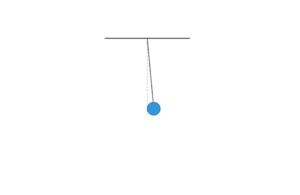Simple Harmonic vs Periodic Motion
Example
Question:
Which of the following functions of time represent (a) simple harmonic motion and (b) periodic but not simple harmonic? Give the period for each case.
(1) \(\sin \omega t - \cos \omega t\)
(2) \(\sin^2 \omega t\)
Solution:
(a) \(\sin \omega t - \cos \omega t\)
This can be written as
\[
\sin \omega t - \cos \omega t = \sqrt{2} \sin(\omega t - \pi/4)
\]
This is a simple harmonic motion with period \(T = \frac{2\pi}{\omega}\) and phase angle \(-\pi/4\) or \(7\pi/4\).
(b) \(\sin^2 \omega t = \frac{1}{2} - \frac{1}{2} \cos 2\omega t\)
This function is periodic, with period \(T = \frac{\pi}{\omega}\). It also represents a harmonic motion where the equilibrium occurs at \(1/2\) instead of zero.
Current Function: √2 sin(ωt - π/4)
Period (T): 6.28 s
Type of Motion: Simple Harmonic Motion
About Harmonic Motion
Simple Harmonic Motion (SHM) is a type of periodic motion where the restoring force is directly proportional to the displacement and acts in the direction opposite to that of displacement. It can be represented by a single sine or cosine function.
where:
A = amplitude
ω = angular frequency
φ = phase angle
T = 2π/ω (period)
Periodic but not SHM: The function sin²(ωt) is periodic but not simple harmonic, as it can be expressed as (1 - cos(2ωt))/2, showing it has a different equilibrium position and period (T = π/ω).



